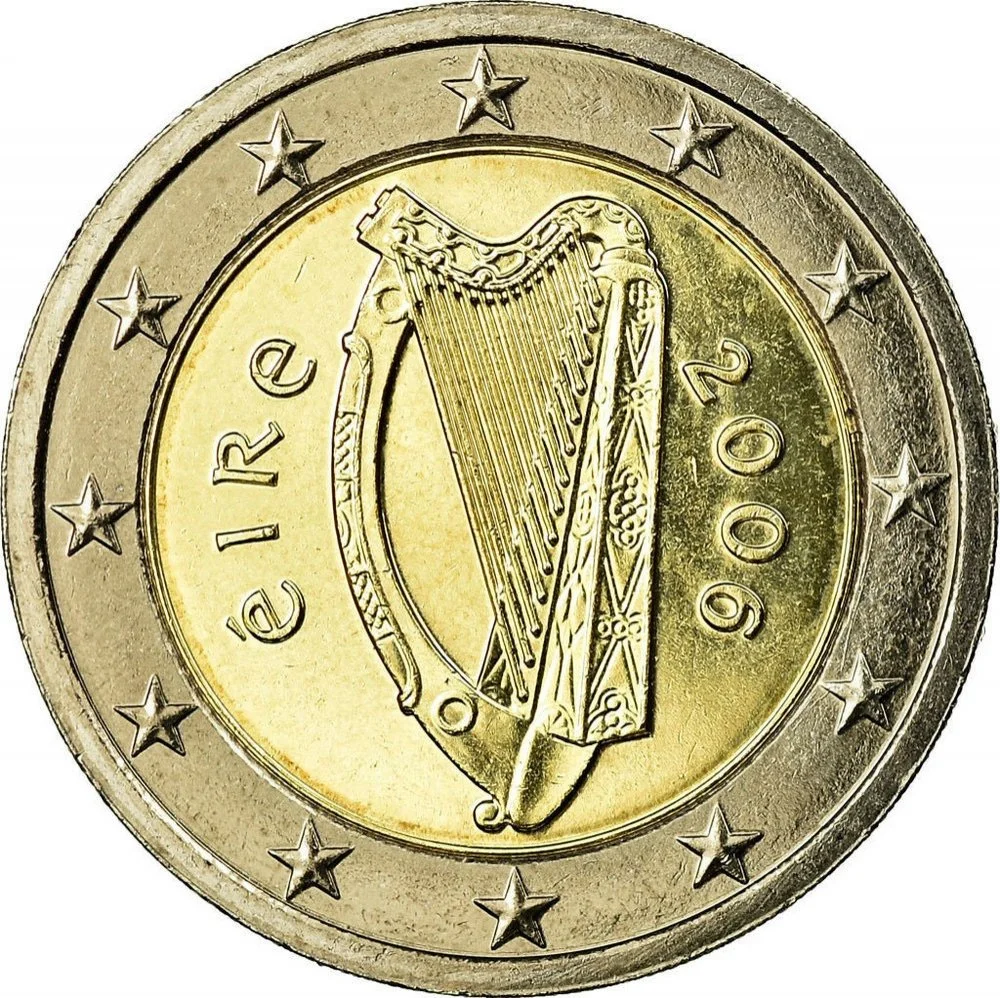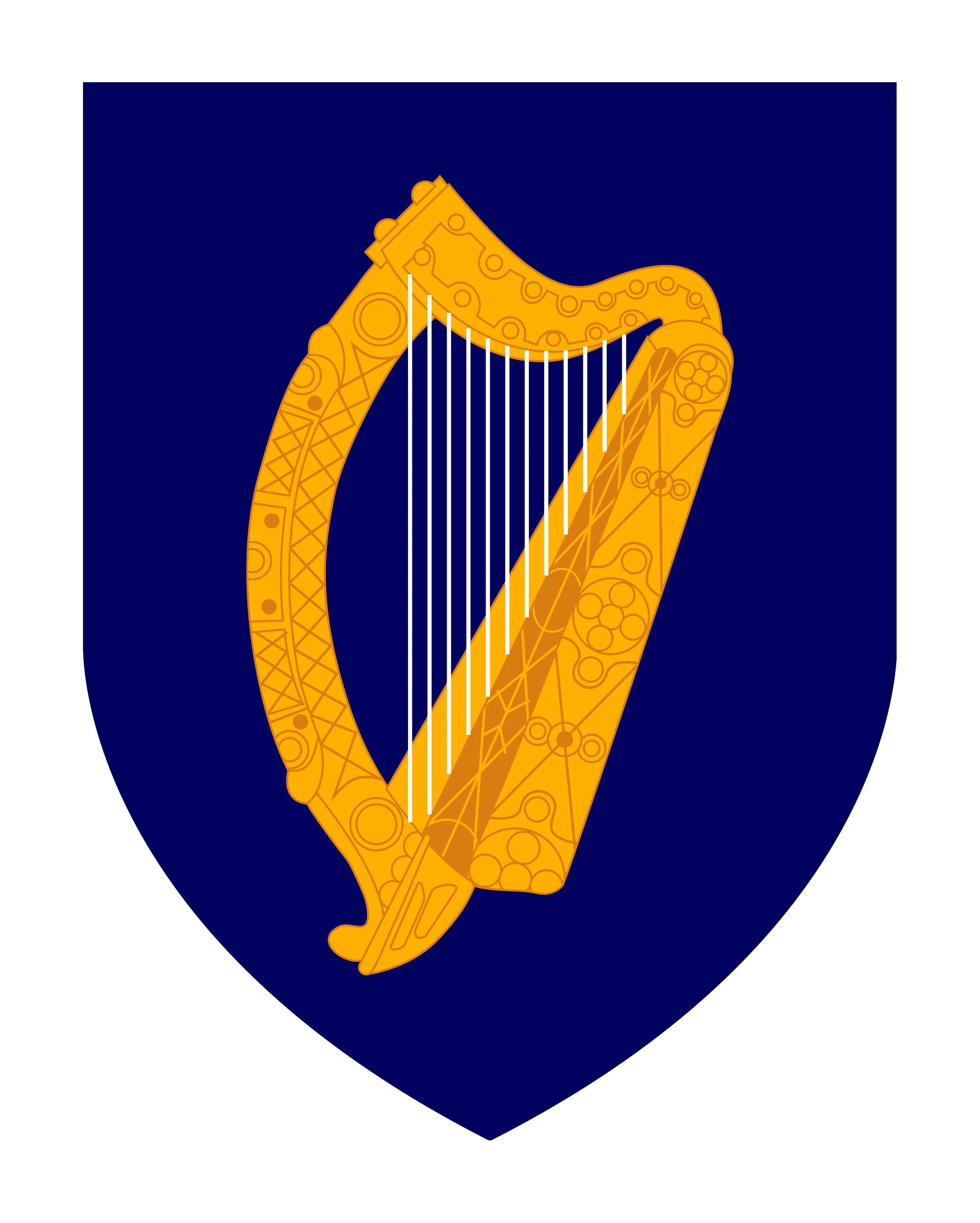Beyond the Surface: Decoding the Symbolism of Ireland's Harp on Euro Coins
by Françoise from association Les Amis de l’Euro.
Don’t just say “a harp”
What motif graces all standard euro coins from Ireland? Any resident of the eurozone can answer: the harp.
Indeed, but there's more to it than that. To truly pay homage to Ireland, one must delve deeper.
The harp has long been a part of the coat of arms on coins from the British Isles since the Middle Ages. It had already adorned Irish pound coins since 1928. In the image 1. is the 2 EUR coin from Ireland, and in the image 2. is a coin from Ireland dating back to 1990, predating the adoption of the common currency.
What's striking about these two coins are their remarkable similarities: the placement and style of the legend, the year, the orientation, and the details of the instrument. The Irish euro is an exact replica of the Irish pound.
And this is where it becomes interesting to study the question more deeply.
Much like the shamrock, the colour green, or Saint Patrick, the harp serves as a powerful emblem of Irish identity. Let us also remember, the label of a well-known dark brew from Dublin, or the tail insignia of the well-known Irish low-cost airline.
From Modern Concert Instrument to the Graceful Celtic Harp
In the realm of music, harps can broadly be categorized into two types: the modern concert instrument found in our symphonic orchestras, seen on the left below, and the notably smaller Celtic harp on the right.
Concert harp © Coiniverse
Celtic harp © Coiniverse
At a glance, it's evident that the harp on the 2 EUR coin isn't the modern concert instrument, as it features a straight column, while the one in the 2 EUR coin boasts a graceful curve. The Celtic harp, on the right, also showcases this elegant curvature.
Drawing nearer, it becomes clear: the instrument on the 2 EUR coin is, indeed, a Celtic harp. This aligns seamlessly with Ireland's status as a Celtic nation—where its music, I believe, evokes familiar tunes, especially for the older generation who may recall the works of Alan Stivell. Yet, let's delve even deeper: this is no ordinary Celtic harp.
The legend of Brian Boru
The harp depicted on the 2 EUR coin is a representation of the instrument preserved at Trinity College Dublin, an instrument that legend has attributed to Brian Boru. Two crucial elements emerge from this description: Brian Boru and Trinity College Dublin.
Brian Boru, an Irish king who triumphed over the Vikings, is renowned for his early endeavours to unify Ireland during the 10th and 11th centuries. In contrast, the harp preserved at Trinity College Dublin hails from the 14th or 15th century. Understandable why description mentions "legend."
As for Trinity College Dublin, the University of Dublin, was founded in 1592 during the reign of Queen Elizabeth I. The official logo of this institution features the Celtic harp, positioned just as it appears on the euro coin.
Trinity College Dublin Logo © Trinity College Dublin
The harp known as Brian Boru's harp also features on the current coat of arms of Ireland. Let's carefully examine the adornments on both the instrument depicted on the 2 EUR coin and the emblem, paying particular attention to the column, soundboard, and resonating body - they exhibit striking similarities.
We can therefore see that in addition to the strong national symbol that is the harp of euro coins, there are some additional allusions which reinforce the message: Celtic music, Brian Boru, Trinity College Dublin, the coat of arms, etc.
Ireland Coat of Arms © AdobeStock
In the first chapter, I emphasized that when it comes to Ireland's coins, merely labelling it "a harp" falls short. The depicted instrument, in reality, encapsulates much more; it stands as a potent embodiment of Irish identity.
Written by Les Amis de l’Euro.
The article is provided by Les Amis de l’Euro. The French association established in 2003, has 1,300 members across Europe (among others) and a team of volunteer specialists dedicated to serving Euro collectors.
The Association has defined four objectives:
Information: Collecting as much information as possible about euro coins and banknotes and making it available on their website.
Engagement: Creating and maintaining connections among members, answering their questions, and managing a discussion forum.
Collection Management: Regularly updating an online catalogue, facilitating bulk orders for members to secure euros at favourable rates, and regularly issuing numismatic items featuring the association's insignia.
Representation: Thanks to the number and expertise of its members, the association represents collectors to the European Central Bank, the European Commission, and the press, among others. The association also participates in major French and international trade shows.















